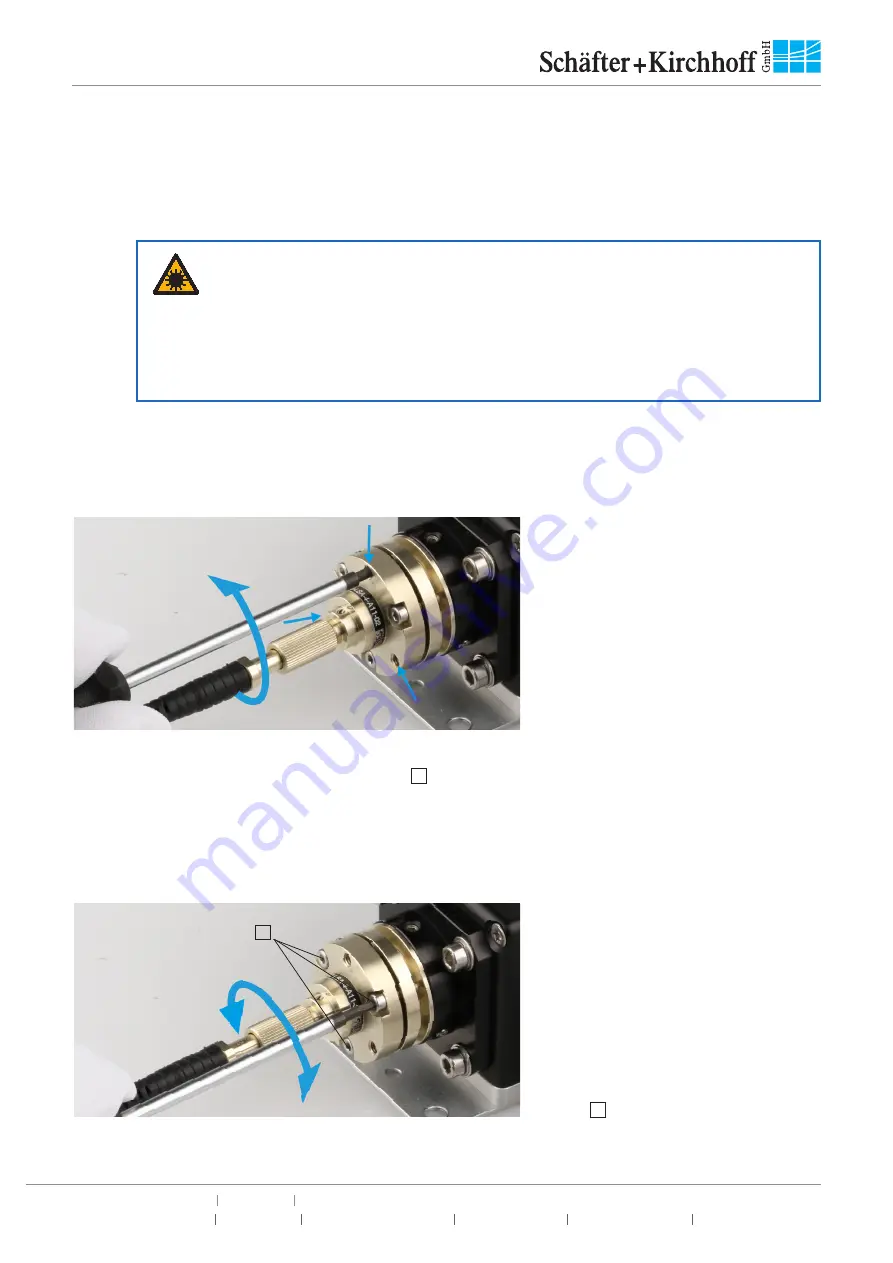
Adjustment_60SMF-LSA 20.05.2021 © Schäfter+Kirchhoff GmbH
Schäfter+Kirchhoff GmbH Kieler Str. 212 22525 Hamburg, Germany +49 40 85 39 97-0 info@sukhamburg.de www.sukhamburg.com
10
6. Tilt Adjustment: Finding a Signal
When coupling into single-mode fibers, the laser beam couplers should produce a diffraction-limited spot at
the fiber end-face that matches the mode field diameter and - at the same time - the divergence of the fiber.
Fiber-coupling with high coupling efficiency can only be achieved when this condition is met. Thus, coupling a
laser beam into a single-mode fiber requires precise adjustment and needs some patience.
Refer to the laser instruction manual for all instructions regarding laser
safety!
• Do not stare directly into the laser beam (which can cause permanent
damage to the eyes).
• Do not stare at the reflected beam from reflective objects.
• Do not point the laser beam to other individuals.
Caution!
Measure the coupled light at the opposite end of the fiber cable using a light detector or power meter. The
detector may have to be adjusted to maximum sensitivity in order to detect a low transmission level possible in
the first few coupling steps.
Perform the following steps:
Figure 20:
Loosen the locking screws
(grub screws) by 2 - 3 turns.
The adjustment screws (hex with head, Figure 21,
D
) now are turned in a way that each possible adjustment
point is met once. Use hex screwdriver 50HD-15. For example, turn one of the screws just a little. Then, turn
the next adjustment screw in a large range back and forth. Repeat the procedure by turning the first screw a
litter further and the next adjustment screw again in a large range. Go on, until the detector shows a reaction
and the beam is found.
Figure 21:
Coarse adjustment of the laser beam
coupler with the three adjustment
screws
D
(hex with head).
D


































